Even if you don’t have a green thumb, you can grow a pothos plant. This trailing vine with heart-shaped leaves has quickly risen in the houseplant ranks due to its durability and tons of variety. Learn how to care for your plant, propagate it, and the most popular types of pothos you can find at your local garden centre.
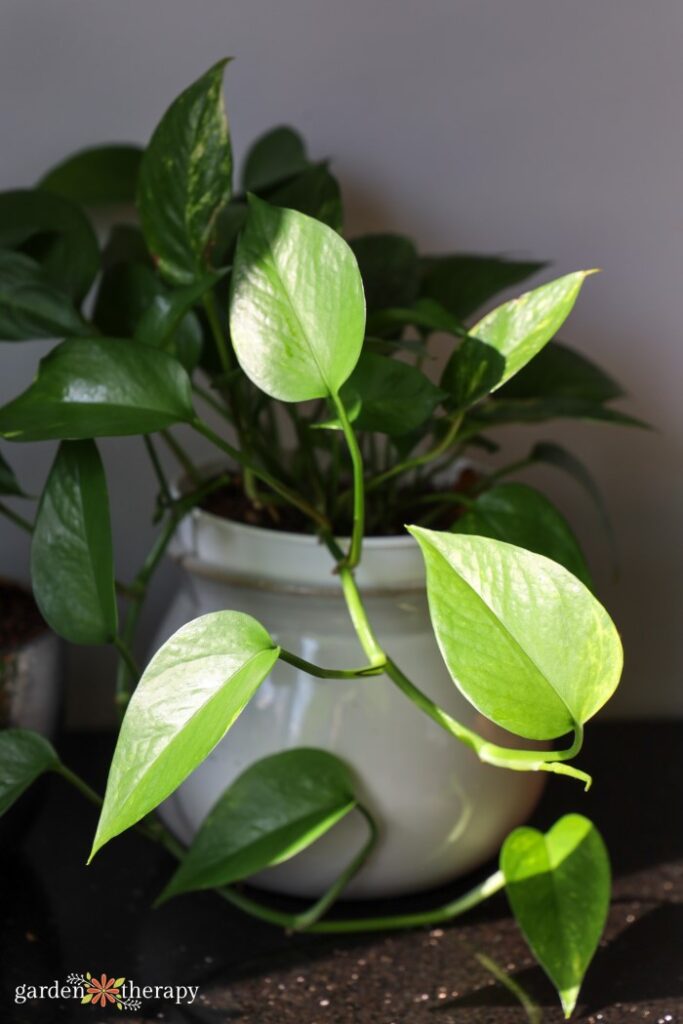
I have a confession. Sometimes, my houseplants go neglected.
While I practically have a certified green thumb, I get so excited about my outdoor garden that my little houseplants inside can go by the wayside. It isn’t until fall and the winter chill arrives and I’m stuck inside do I go, “Oh yeah, my houseplants!”
Luckily, my pothos doesn’t seem to mind one bit. This houseplant truly is a little warrior that keeps on keeping on no matter the conditions it’s put in.
So if you’re looking for a low maintenance and beautifully green houseplant, keep reading to learn more about pothos!
This guide covers…
- Meet the Pothos Plant
- Popular Types of Pothos
- Basic Care for Pothos Plants
- Location
- Light
- Watering
- Soil
- Fertilizer
- Common Issues With Pothos Plants
- Frequently Asked Questions About Pothos Plants
- More Houseplant Guides
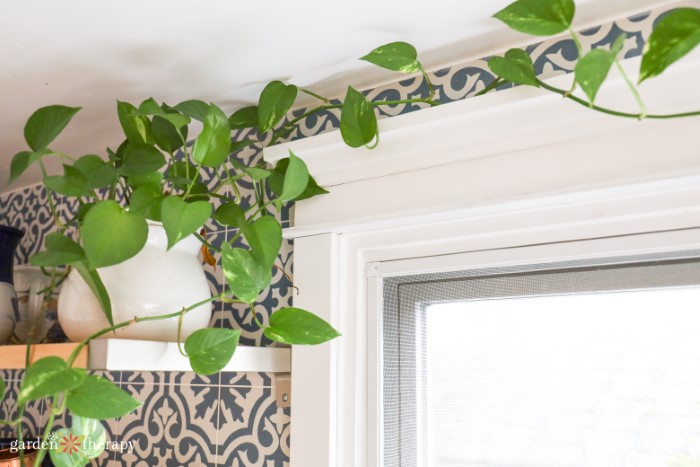
Meet the Pothos Plant
Epipremnum aureum is most commonly known as devil’s ivy or pothos. Originally native to French Polynesia, you can find it in the wild throughout India, China, Australia, New Guinea, Southeast Asia, and the Solomon Islands.
A prolific grower, it can grow in zones 10-11 outdoors but can get very invasive. It’s mostly grown as a houseplant and has quickly become a favourite due to its ability to grow in many different conditions.
Pothos is a trailing vine with heart-shaped green leaves that can grow anywhere from 6-8 ft long. You can also find many variegated varieties of the plant in yellow, white, or cream. Even under the most perfect conditions, the plant doesn’t usually flower. You enjoy it simply for its beautiful leaves!
(By the way, if you are interested in flowers, here’s a list of the most beautiful flowering houseplants!)
Many confuse pothos with the philodendron plant as they are from the same family, Araceae. However, they’re different species.
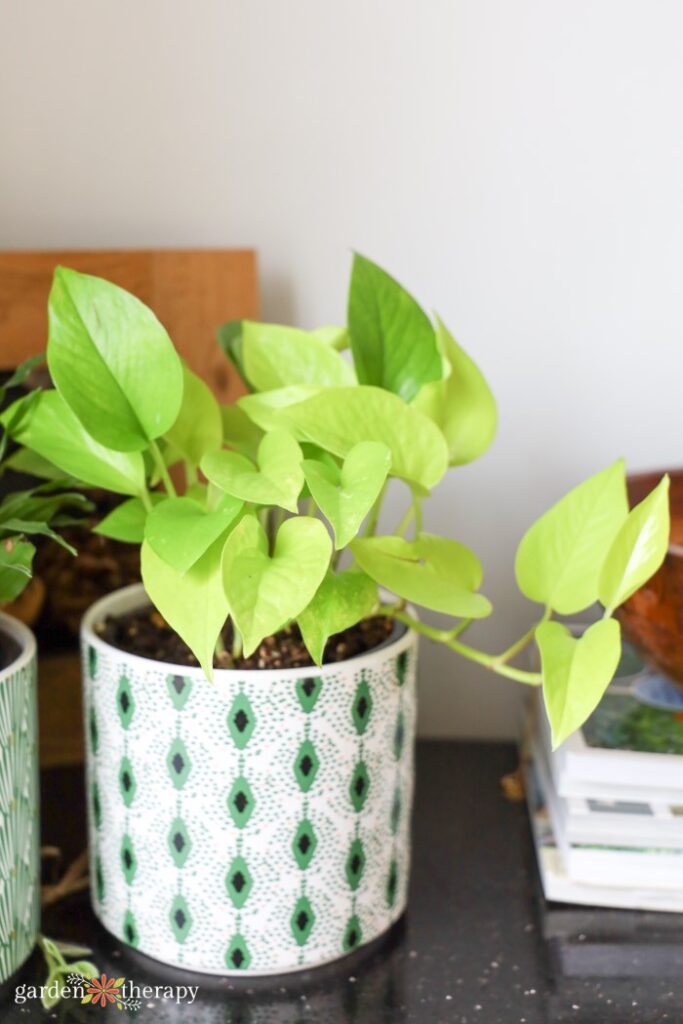
Popular Types of Pothos
- Golden Pothos: You are sure to find these pothos at your local garden centre as it’s the most common variety. It has signature green, heart-shaped leaves with golden markings.
- Marble Queen Pothos: Another popular variety, the marble queen pothos has a ton of white mixed in with the green, creating a marbled effect. This variety prefers more light as it produces less chlorophyll than other varieties.
- Jessenia Pothos: Like the Marble Queen, you will find plenty of variegation on the Jessenia pothos. However, Jessenia is much brighter and closer to lime green and yellow. It also will thrive with bright, indirect light.
- Neon Pothos: One of the rarer varieties, prepare yourself for lime green leaves with the neon pothos. The colours can range from pale green to an almost golden hue. The colour intensifies as the leaves age.
- Manjula Pothos: Produced by the University of Florida, the Manjula looks similar to its parent plant, Marble Queen. You will notice curvy edges on this variety and often more intensified patches of white.
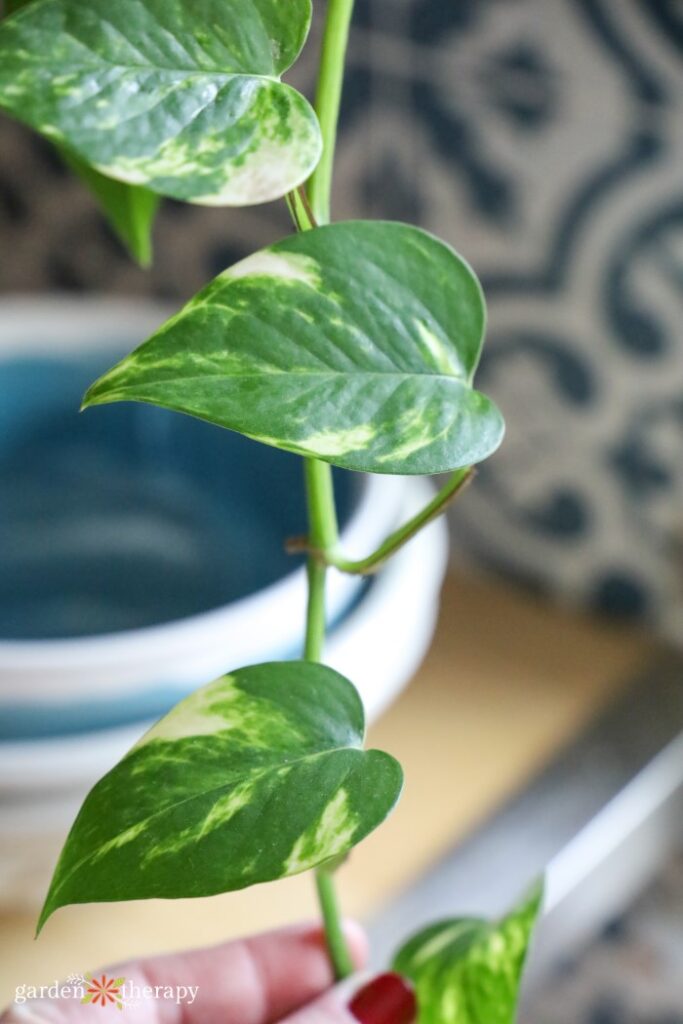
Basic Care for Pothos Plants
Chances are, you won’t get many complaints from your pothos! They’re one of the most indestructible houseplants out there. That being said, they do have ideal conditions like all plants to ensure they’re happy and reach their full potential.
Location
Many beginners love growing pothos not just for their hardiness, but because of their versatility. You can grow pothos…
- In hanging pots. Let them trail down from above to keep out of the way of pets and kids or for an indoor jungle feel.
- Let them climb outwards along a table or windowsill.
- Give them a moss pole or another support to allow them to grow upwards to new heights.
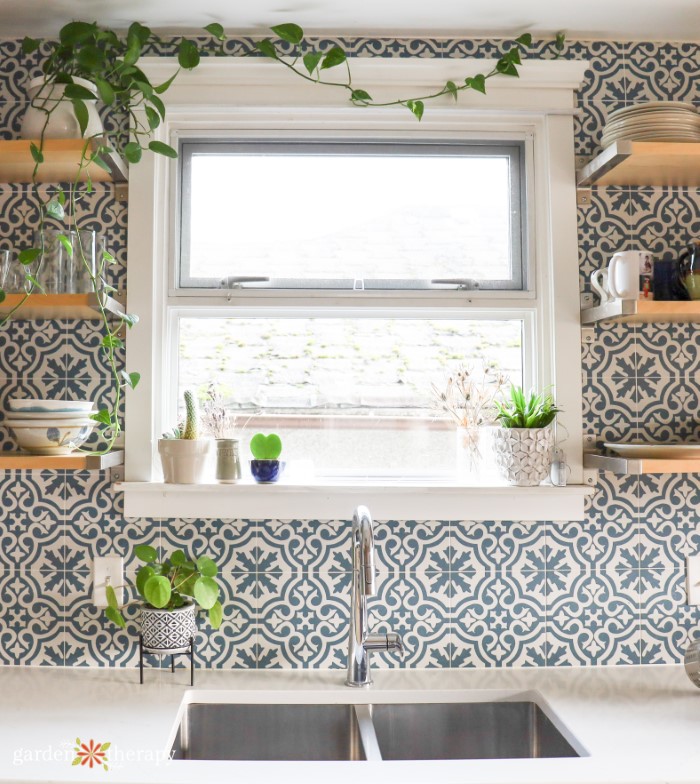
Light
In a perfect world, you would place your pothos indoors somewhere with bright, indirect light. You want to keep them away from direct light and the hot afternoon sun. This is how they will get the prettiest leaves.
However, you will find the pothos listed as one of few plants that do well in low light. If you have a dark corner of the house, want an office plant, or need some greenery for the bathroom, the pothos may just fit right in.
If you have variegated pothos, keep in mind that they may lose their variegation or will grow slowly if they don’t get enough light. Because the green parts of the plant are what collect energy from the sun, these kinds of pothos have to work harder to get enough energy for the plant and will often grow slower.

Watering
Here’s some good news: if you forget to water your pothos, they’ll forgive you. Pothos don’t need a lot of water and you should only water them once the soil is dry. Test the soil with your finger before watering. You want the soil to be moist but not soaking after you’ve watered.
Soil
Any soil for houseplants will work well for your pothos. Like most houseplants, pothos can suffer from root rot so make sure it is planted in a pot with good drainage and avoid overwatering.
Interestingly enough, you can also grow pothos cuttings in water. You can leave your pothos relatively unattended as long as the roots are touching the water. But to get really happy pothos, soil works best.
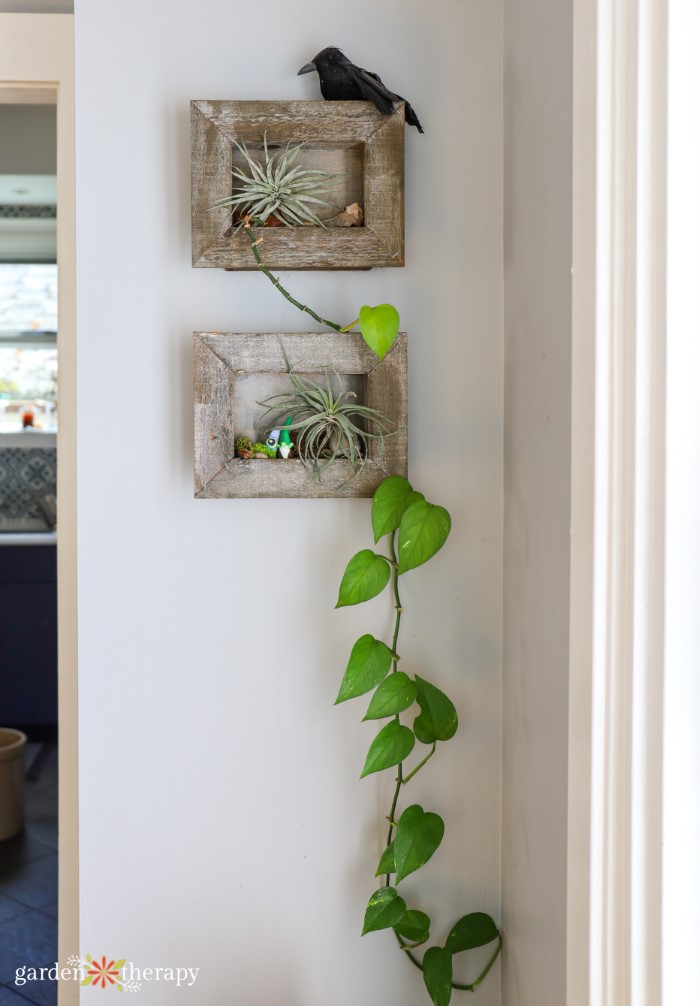
Fertilizer
Fertilize your pothos every 2-3 months during the growing season. Water-soluble fertilizer works best. This will encourage your pothos to grow more quickly, but they will also grow well without fertilizer.
Common Issues With Pothos Plants
If you see yellow leaves on your pothos, don’t panic quite yet. As older leaves die, they will turn yellow before falling off. You should only be concerned if young leaves turn yellow or older leaves have brown tips.
Most often, this is a sign of too much light. Move pothos away from any direct sunlight. It could also be a sign of overwatering or a sudden drastic weather change.
Fungus gnats are also common with houseplants, also from overwatering and wet soil as well as root rot.
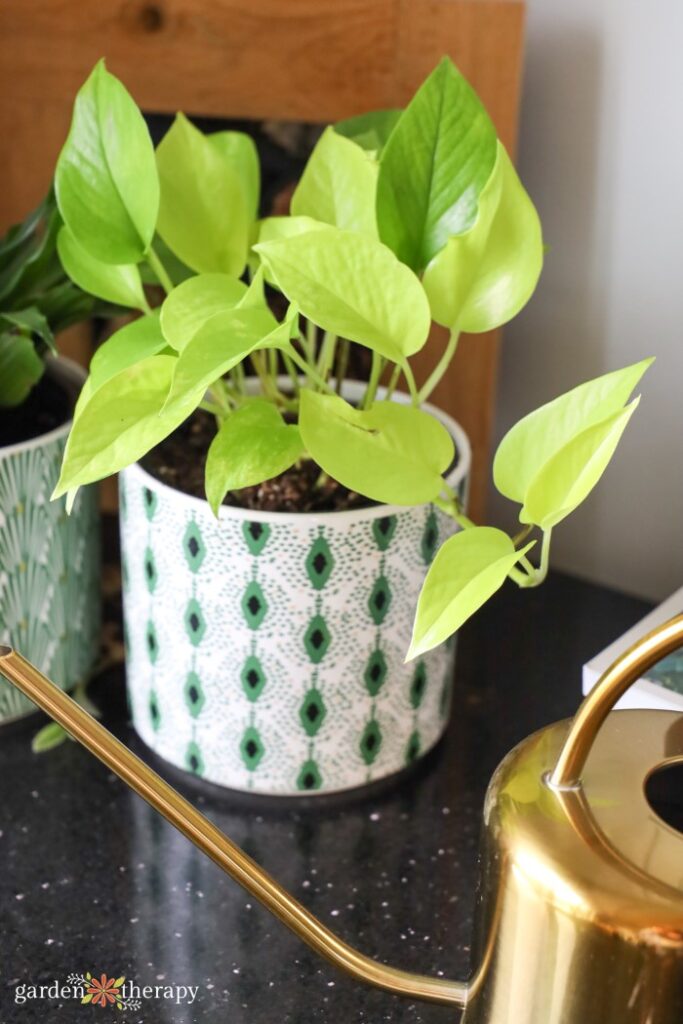
Frequently Asked Questions About Pothos Plants
Another name for pothos, many also refer to the houseplant as devil’s ivy. This name comes from the fact that the plant is so difficult to kill. It also will stay a nice green despite being in dark lighting.
The easiest way to propagate pothos is by taking cuttings and placing them in water. To do so, make a cutting using sanitized scissors or pruners. Cut underneath a node (where a leaf comes out) and place it in water. The roots will grow from these nodes. Make sure to remove any leaves that would be underwater as they can contaminate the water with bacteria.
Once the roots are about 2 inches long, you can transplant them to the soil. Alternatively, you can leave them in water for as long as you like!
Sometimes, plants have a difficult time switching rooting mediums. Not all water to soil cuttings will adapt well.
Yes, pothos is toxic. This is because they have calcium oxalate crystals. Like tiny shards of glass, they can pierce the skin and cause irritation in the mouth or digestive tract if consumed. For this reason, it’s best to keep them away from pets and children. Learn more about pets and toxic plants here.
Note: While they are toxic, they’re not fatal. They cause irritation to the skin, lips, and mouth as well as cause vomiting.
If you have any more questions about growing pothos, let me know in the comments down below!





My pothos has had 3 to 4 leaves for the longest (about 1 year) I propagated a 2 leave piece (from water to soil) now have 4 leaves however its very slow growing and 1 leave is yellowing at the tip. Moved it from the bright indirect light to a more shaded area.
I fertilize it every 8-10 weeks with miracle gro….would love to see growing progress …help!!!